
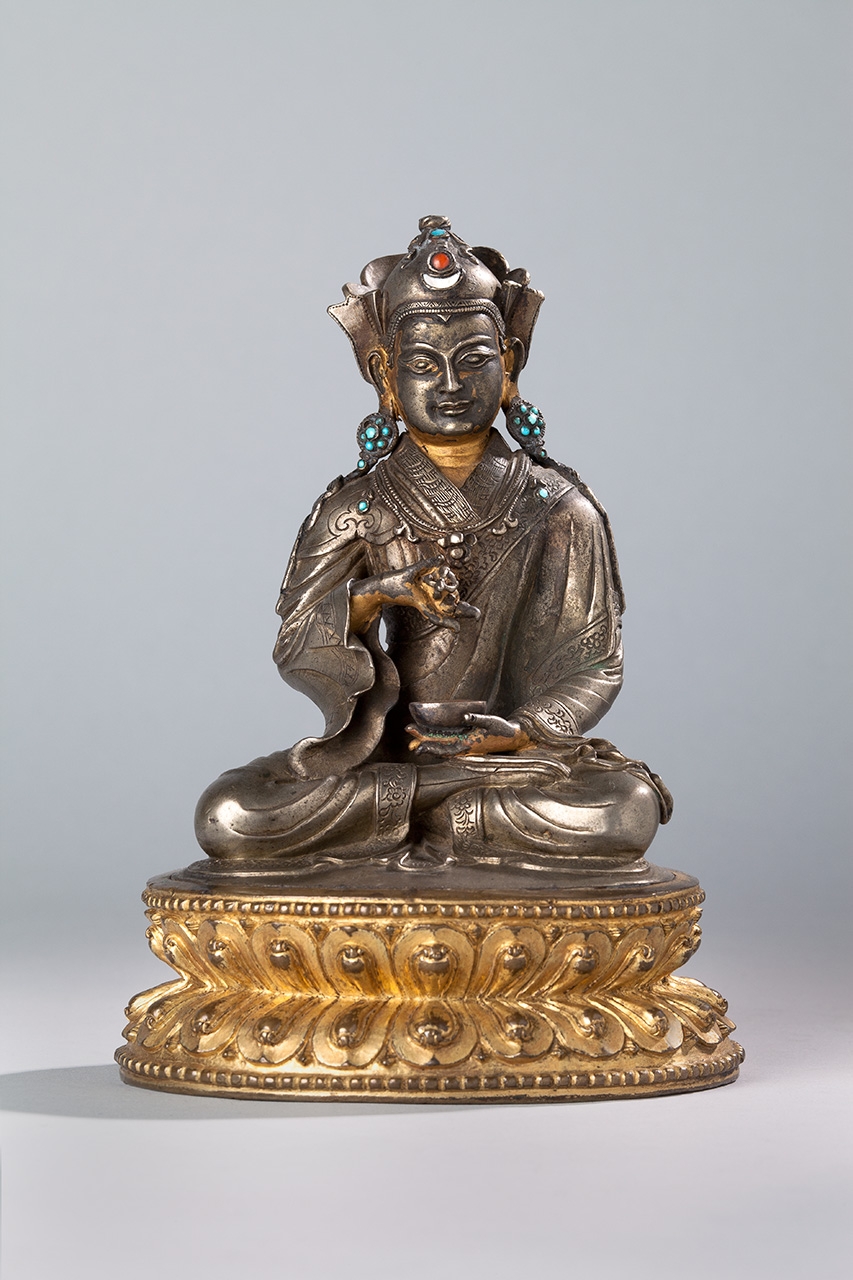
Padmasambhava, an Indian teacher said to have been miraculously born inside a lotus flower—hence his name, which means “lotus-born”—is revered by all schools of Tibetan Buddhism. He is credited with taming the forces adverse to Buddhism in Tibet, including many indigenous gods that he transformed into Buddhist protectors [...]
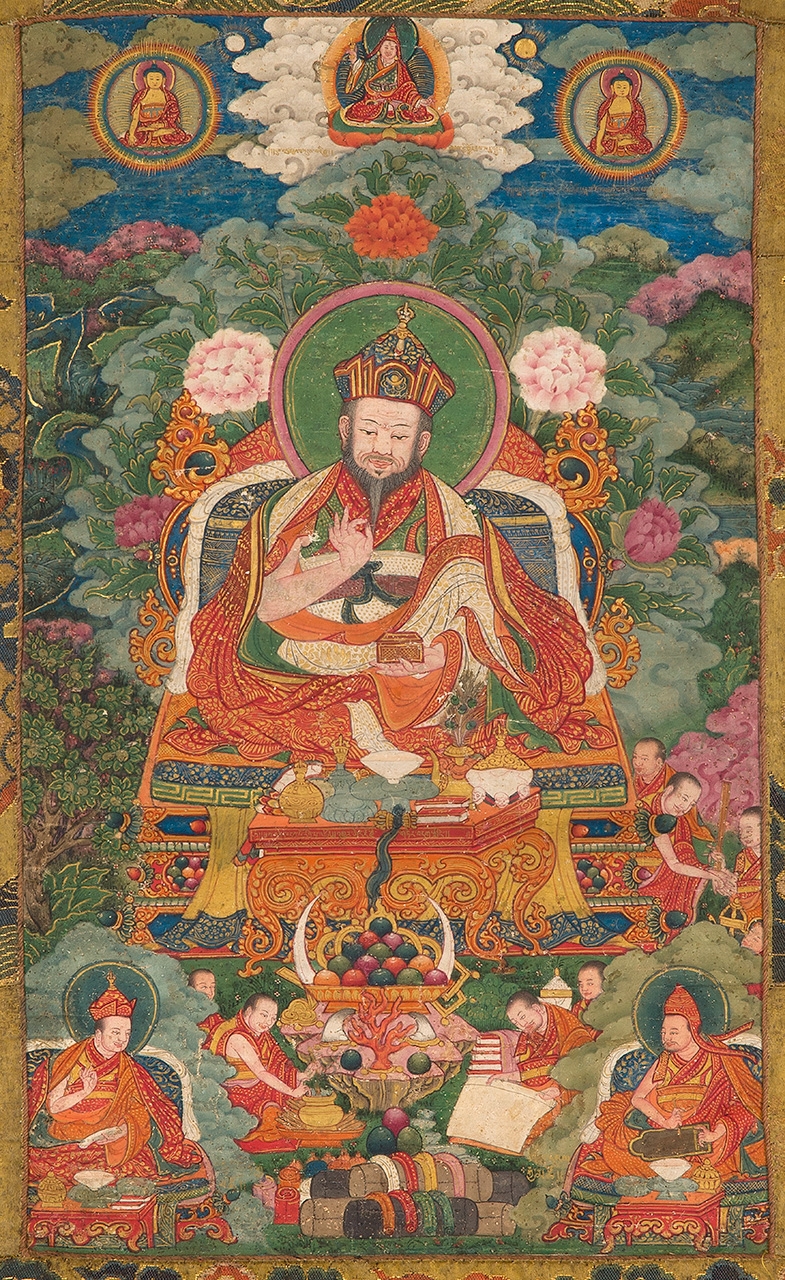
This is an engaging portrait of Terdak Lingpa Gyurme Dorje (1646–1714), the founder of Mindroling Monastery, which came to be regarded as the chief monastery of the Nyingma Tibetan Buddhist tradition. Terdak Lingpa wears the robes of a lay practitioner and holds a square casket, a symbol of his role as a revealer of hidden teachings (terma) [...]

This luminous painting of the Future Buddha, Maitreya, shows him sitting on his celestial throne in Tushita heaven radiating light. The Future Buddha sits with his legs extended as if poised and ready to descend to earth and take up his ministry as the buddha of the next eon [...]
__large-original-ratio.jpg)
Maitreya is one of the great bodhisattvas said to reside in the realm of Tushita, where he awaits his time to be born as a human and manifest his life as the future Buddha [...]
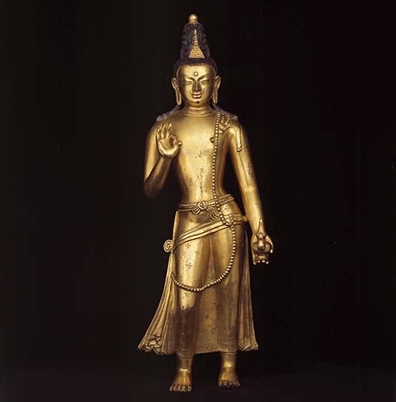
Maitreya, the Buddha of the Future, recognizable by the stupa in his hair, is a special focus of worship among the Mongols. The promise of the coming of a new age, which the Buddha of the Future would usher in, was especially appealing to them, and they linked this story with their aspirations to reestablish the glory days of the Mongol Empire [...]
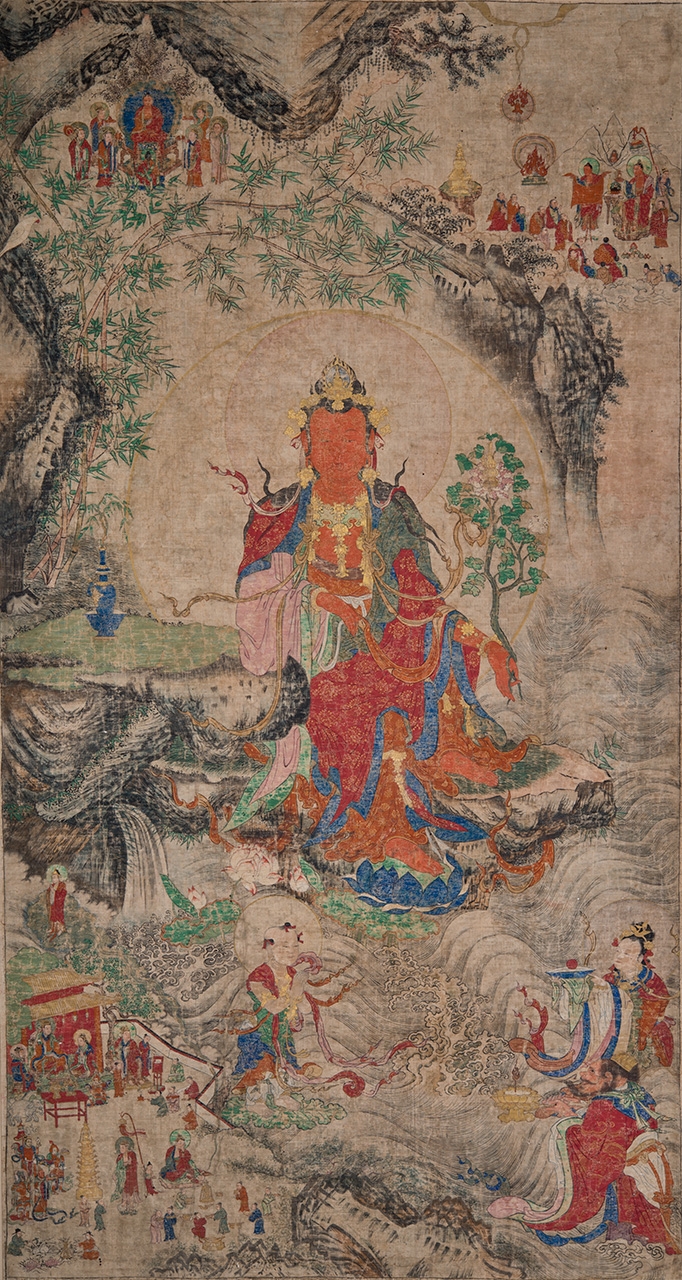
This painting is an unusual pastiche of Tibetan and Chinese imagery and painting techniques. The central figure, the bodhisattva and future Buddha Maitreya, is marked by his traditional Tibetan Buddhist iconographic attributes [...]
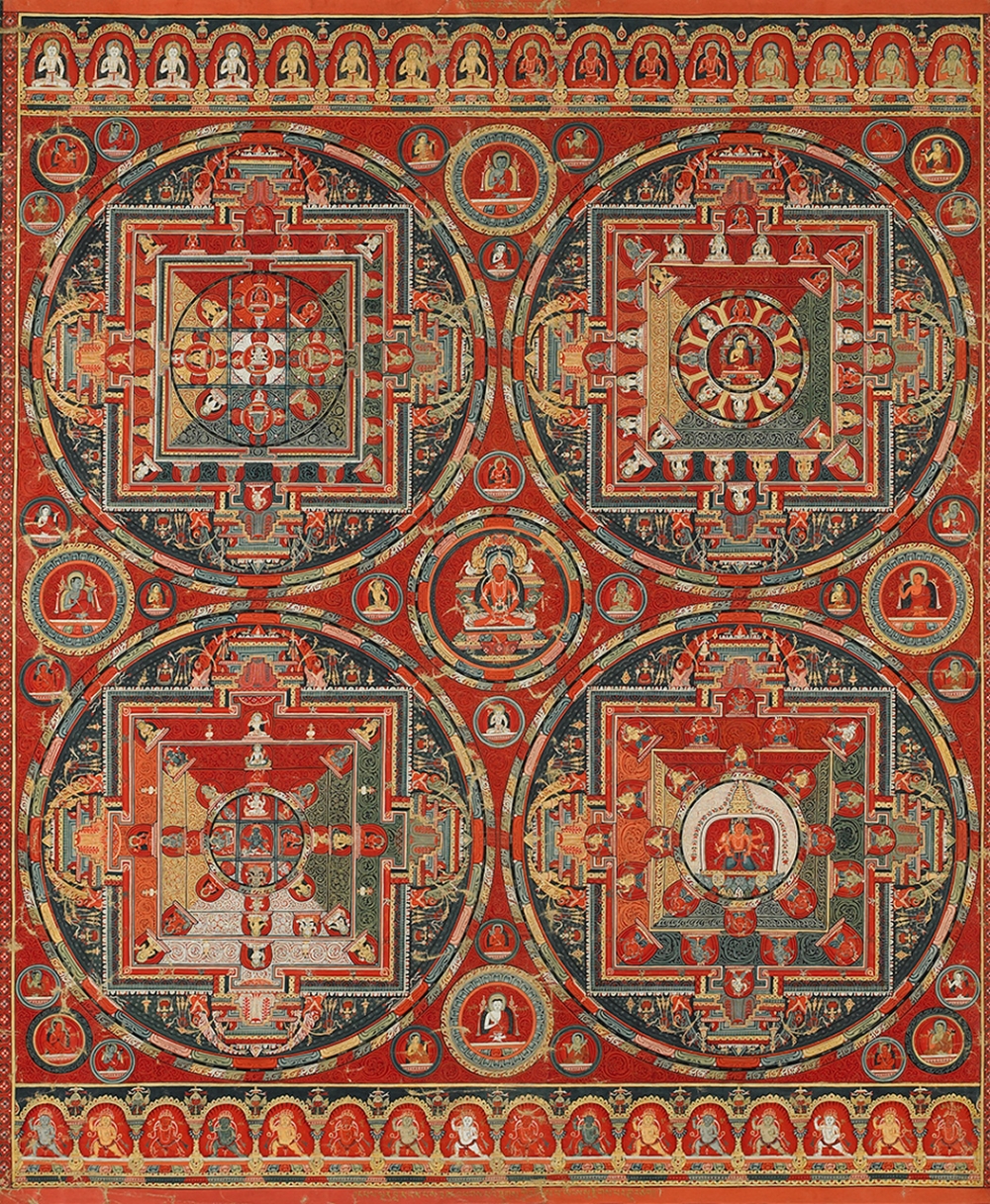
This exquisite thangka is the thirteenth painting in a set depicting the mandalas of the Vajravali cycle, a compendium of Esoteric teachings compiled by the eleventh-century Indian master Abhayakaragupta [...]
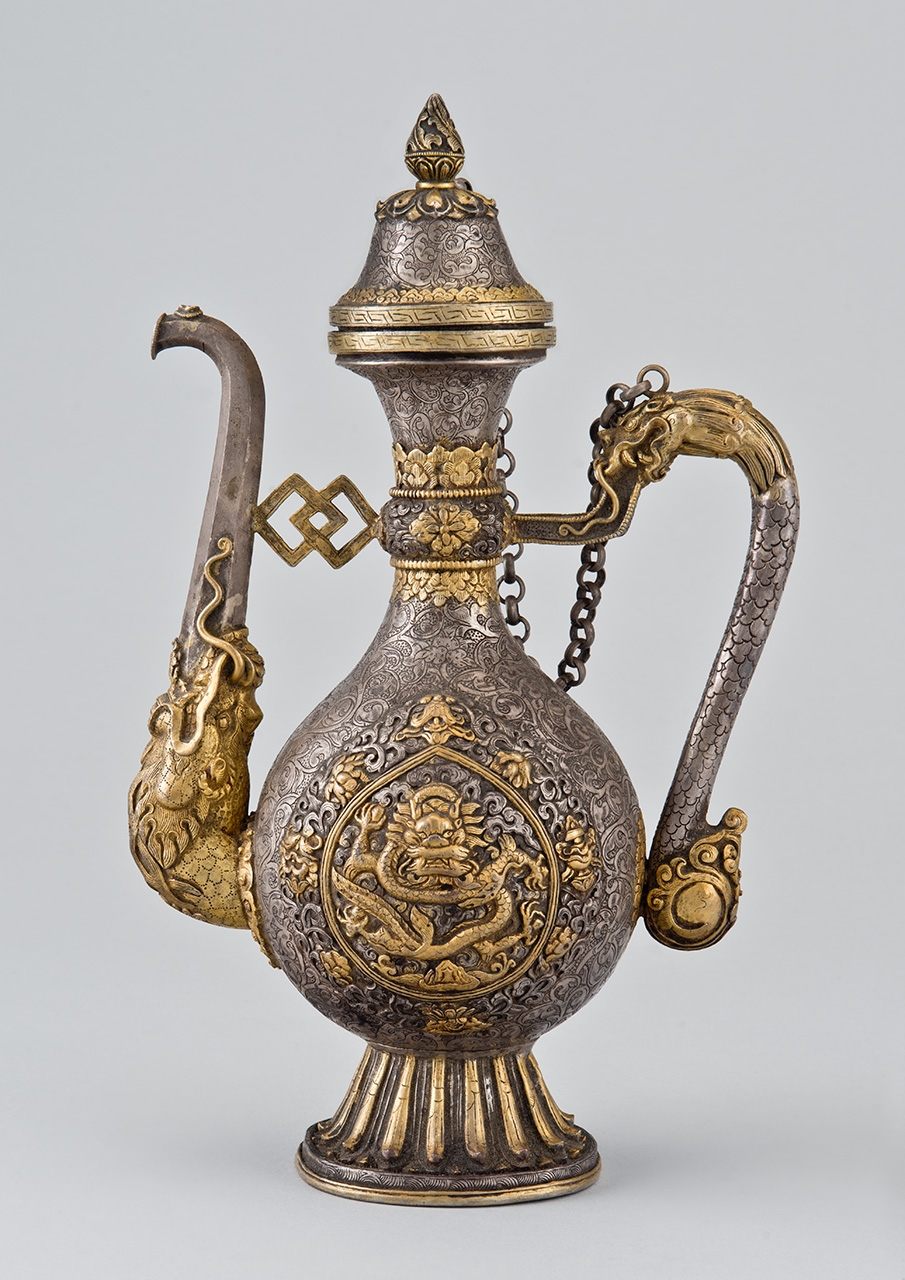
Ewers such as this are used for pouring liquid offerings during daily offerings, initiation ceremonies, and other rituals. This ewer could have been part of a monastic setting or [...]
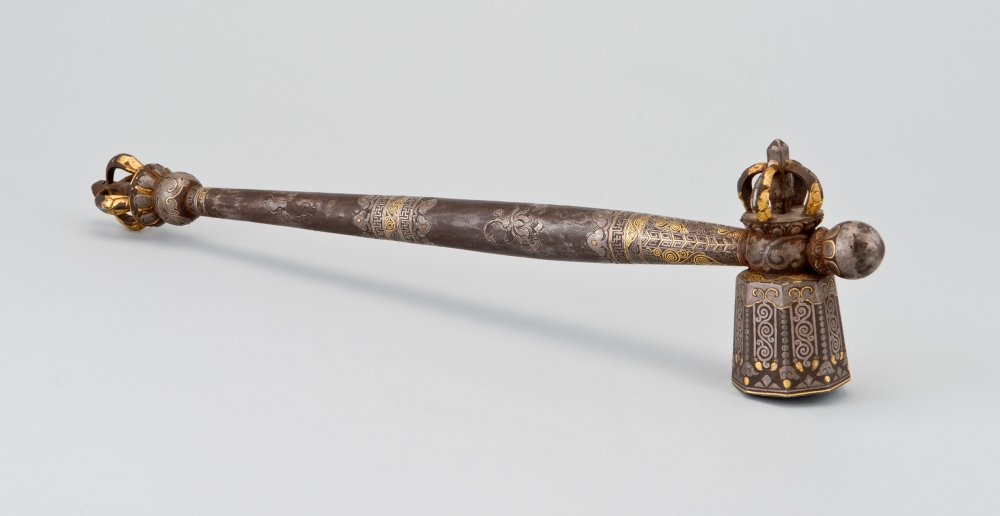
This hammer, finely worked in the difficult damascene technique of inlaying gold and silver decoration, draws on an archaic vocabulary of Chinese designs and an ancient seal-script style reign mark that records its creation in the workshops of the early fifteenth-century Ming-dynasty emperor [...]
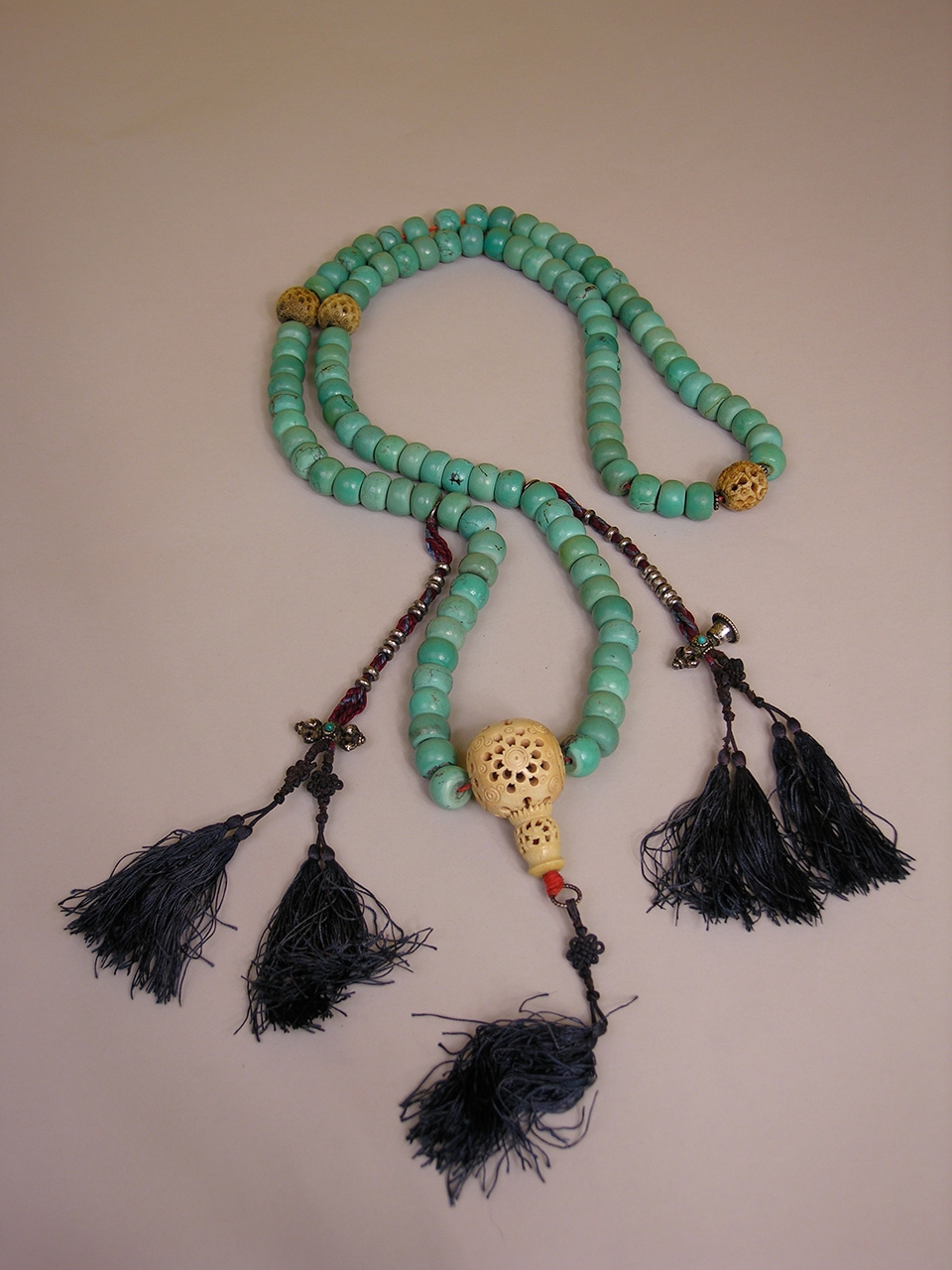
In Tibetan Buddhism prayer beads are used to count the recitations of prayers and devotional invocations (mantras), a process that allows the practitioner to accumulate merit [...]
__large-original-ratio.jpg)
Drenpa Namkha, from the Zhang Zhung region of the Himalayan Plateau, is regarded as an emanation of the founder of Tibet’s Bon religion, Tonpa Shenrab. Comparable to Buddhism’s Padmasambhava [...]
